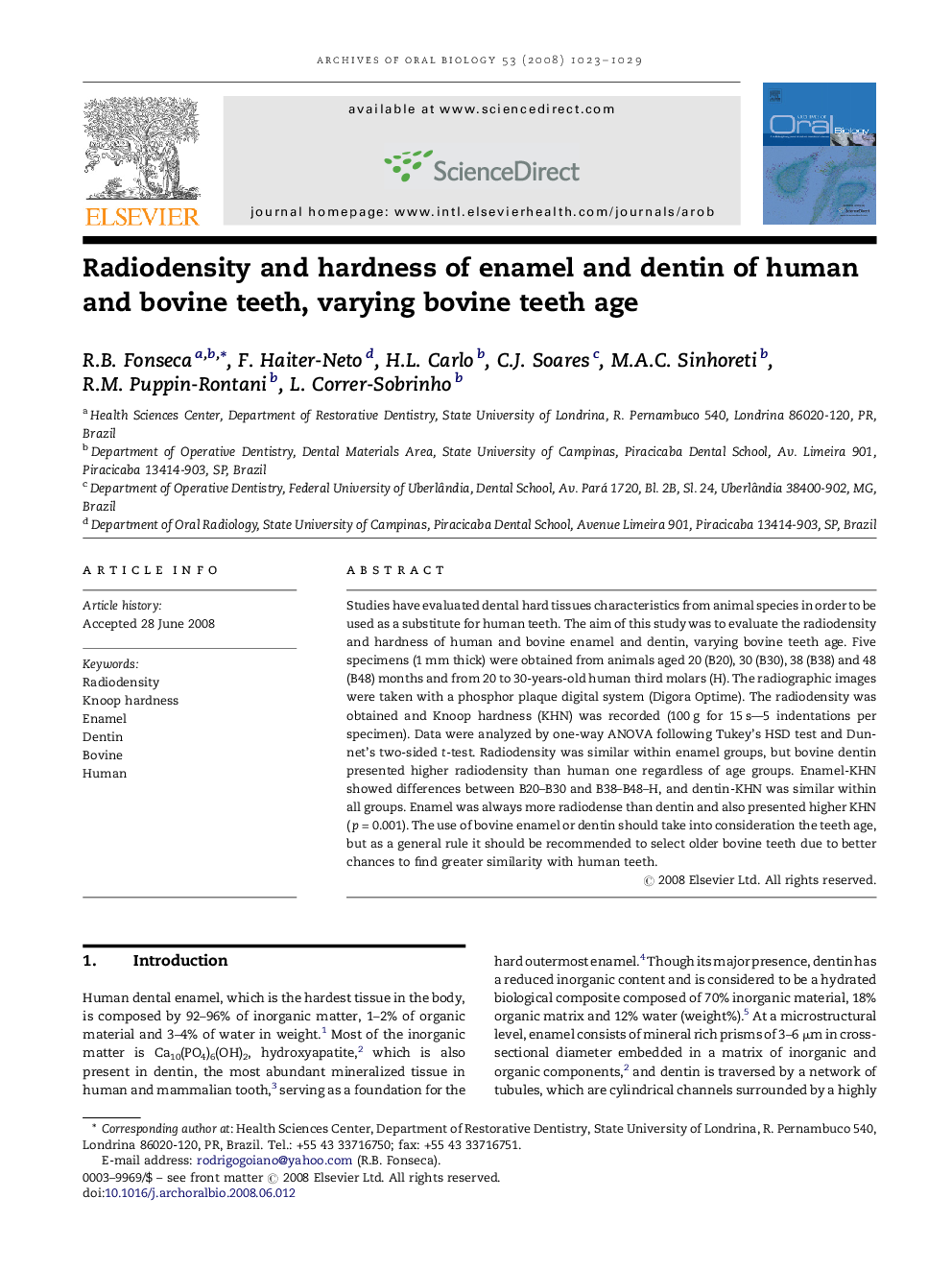| Article ID | Journal | Published Year | Pages | File Type |
|---|---|---|---|---|
| 3121394 | Archives of Oral Biology | 2008 | 7 Pages |
Studies have evaluated dental hard tissues characteristics from animal species in order to be used as a substitute for human teeth. The aim of this study was to evaluate the radiodensity and hardness of human and bovine enamel and dentin, varying bovine teeth age. Five specimens (1 mm thick) were obtained from animals aged 20 (B20), 30 (B30), 38 (B38) and 48 (B48) months and from 20 to 30-years-old human third molars (H). The radiographic images were taken with a phosphor plaque digital system (Digora Optime). The radiodensity was obtained and Knoop hardness (KHN) was recorded (100 g for 15 s—5 indentations per specimen). Data were analyzed by one-way ANOVA following Tukey's HSD test and Dunnet's two-sided t-test. Radiodensity was similar within enamel groups, but bovine dentin presented higher radiodensity than human one regardless of age groups. Enamel-KHN showed differences between B20–B30 and B38–B48–H, and dentin-KHN was similar within all groups. Enamel was always more radiodense than dentin and also presented higher KHN (p = 0.001). The use of bovine enamel or dentin should take into consideration the teeth age, but as a general rule it should be recommended to select older bovine teeth due to better chances to find greater similarity with human teeth.
